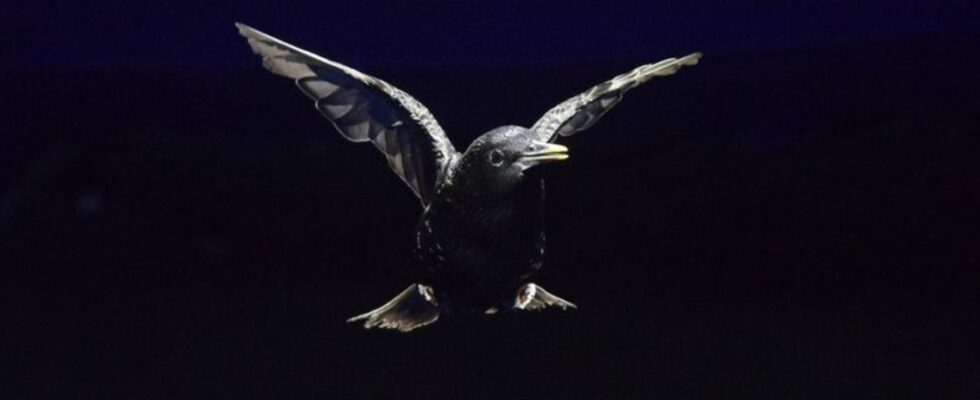Animals
Starlings in the wind tunnel: Always following the leader bird
A star in the wind tunnel in an experiment at the University of North Carolina at Chapel Hill. Photo
© Rónán Gissler And Siyang Hao/UNC Chapel Hill/dpa
Birds that follow a leader bird in formation benefit in various ways. Measurements with starlings in the wind tunnel show a clear advantage.
Flying in a flock behind a leader bird not only offers protection from birds of prey: it also saves energy. At least that is what experiments by a US research group on starlings in Wind tunnel near.
“Many bird species group together in flocks for reasons ranging from predator defense to navigation,” the team writes in the journal “Proceedings of the National Academy of Sciences” (“PNAS”). Data indicate that certain types of flocks – namely V or echelon formations in large birds – offer an advantage because they reduce energy costs. The flock flights typical of smaller birds could therefore increase this expenditure. However, how much energy the animals actually use in group flights has not yet been investigated, writes the group led by Tyson Hedrick and Sonja Friman from the University of North Carolina in Chapel Hill.
They therefore placed both individual starlings (Sturnus vulgaris) and two or three animals in a wind tunnel equipped with cameras. The researchers observed how the birds changed their flight position in the wind tunnel. They also determined their metabolic costs by measuring the CO2 emissions from their breathing air.
The biggest at the top
The scientists observed that although the starlings in groups of three often changed their relative position, on average they flew in a V formation in the experiments. Most of the time, the two rear animals were one wingspan behind and 0.8 wingspans to the side of a lead bird.
The flight cost the birds that flew behind the leader significantly less energy than if they were flying alone in the wind tunnel – depending on the position, this expenditure was up to 25 percent lower. It is said that the saving is probably related to the vortices generated by the lead bird.
Some previous studies on birds in the wild using computer models also indicated lower energy costs in formation flight, the researchers write. However, they did not focus on actual energy consumption.

